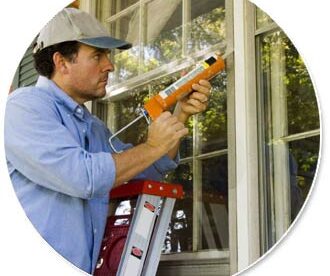 Energy-efficient home design was first introduced in the mid-1990s. New homes were first labeled “ENERGY STAR” efficient in 1995. In general, the focus was on energy-efficient windows and HVAC equipment. Homes that were built more than 20 years ago likely do not have the most energy-efficient features so when cold weather arrives, extra steps are needed to keep your home comfortable.
Energy-efficient home design was first introduced in the mid-1990s. New homes were first labeled “ENERGY STAR” efficient in 1995. In general, the focus was on energy-efficient windows and HVAC equipment. Homes that were built more than 20 years ago likely do not have the most energy-efficient features so when cold weather arrives, extra steps are needed to keep your home comfortable.
We have 5 tips to help your home retain heat this fall and winter, without raising your energy bills.
Assess Your Home’s Energy Use
How much energy does your home consume, exactly? Homeowners can do their own review, checking for drafty windows and the like, but we recommend an energy audit. These professional inspections involve special equipment and tests to measure energy waste. From there, a specific plan can be developed to address where energy is being lost.
Home Upgrades for Energy-Efficiency
The results of your energy audit may reveal several areas of improvement, including small and big projects. Some of the most common sources of energy loss include:
- Poor Home Insulation
- Older Windows & Doors
- Underperforming HVAC Systems
- Inefficient Water Heater
How do you begin to address these issues?
Replace or Add Insulation
Insulation is a type of material that provides heat flow resistance to keep your home warm in the winter and cool in the summer. Commonly found in the attic and basement, this material can experience wear and tear over time. If your HVAC system is underperforming or you notice a spike in energy consumption, it could be time to replace older insulation or add more padding in other areas of the home.
Seal or Upgrade Windows
When well-maintained, residential windows have an average lifespan of 15 to 20 years. After several years in your home, you may start to feel hot and cold spots. To check for drafts, run your hand around the window frames. If you feel a slight breeze or the frame is cool to the touch in the cold season, seal up these drafts. If you feel replacement may be necessary, consult with a professional installer and make sure the project gets done before winter.
Install Efficient HVAC Systems
Air conditioning and heating systems have come a long way in recent years. Depending on how old your units are, replacement could result in huge energy savings. Older systems require more energy to maintain your comfort needs, so they cost more to run. When you install new, ENERGY-STAR rated equipment paired with a programmable thermostat, you’re in control of how often the systems run and how much energy is consumed.
Convert to Tankless Water Heating
According to the Department of Energy, about 18 percent of a household’s energy costs can be attributed to water heating. Tankless water heaters are an efficient alternative that provide hot water when and where you need it! Not only will you use about 40 percent less energy with a tankless water heater, but you become eligible for manufacturer rebates and tax credits. Plus, you’ll save space without a bulky storage tank.
By Carrier custom-built communities maintain the highest standards of energy efficiency. If you’re in the market for a new home, make the energy smart choice! Explore our active communities today.






